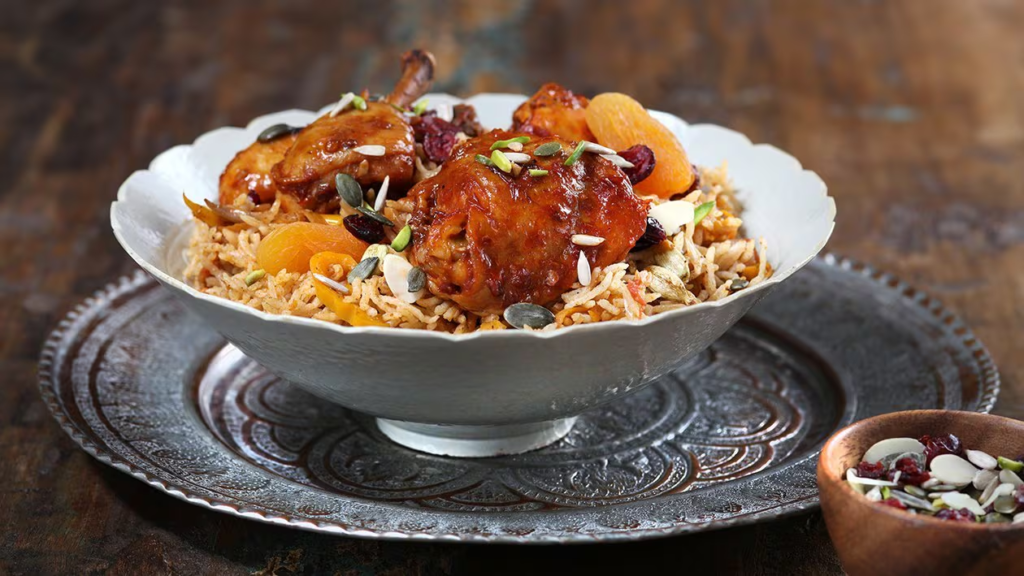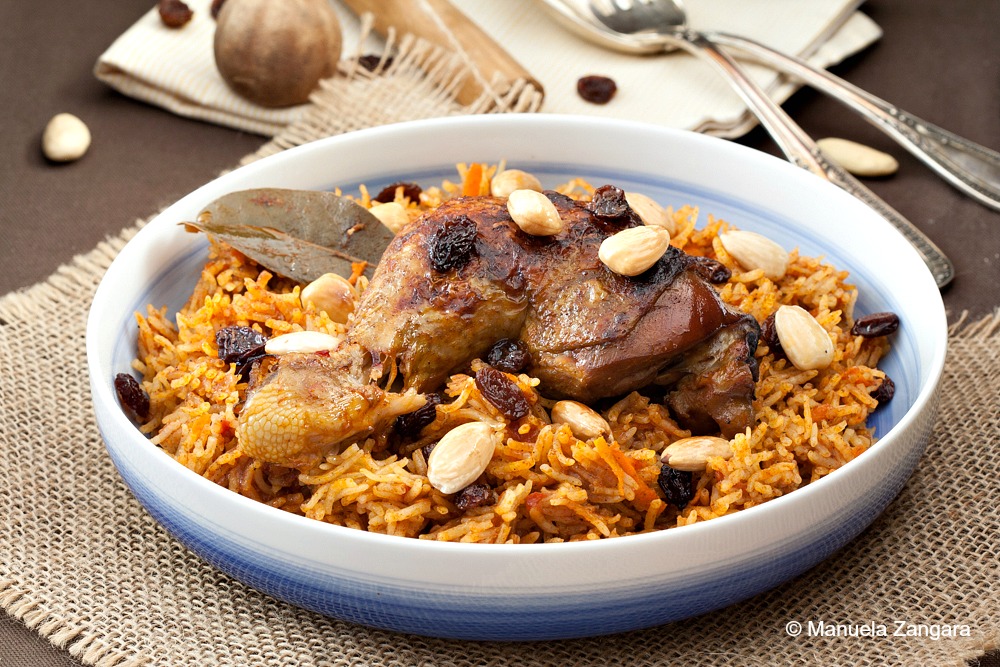Kabsa, the beloved rice and meat dishes from the Arabian Peninsula, continues to hold its position as one of the most popular and cherished meals in the Middle East. With its fragrant spices, tender meat, and deep cultural roots, Kabsa is more than just food it is a symbol of tradition, unity, and Gulf hospitality.
Kabsa is commonly served at family gatherings, festive occasions, and even official events. It is widely enjoyed across Saudi Arabia, Qatar, Kuwait, Bahrain, Oman, and the UAE. Its rich taste and versatile ingredients have allowed it to evolve in various forms while remaining close to its origins.
What Is Kabsa?
Kabsa is a spiced rice dish traditionally cooked with long-grain basmati rice, meat (chicken, lamb, or beef), tomatoes, and a special mix of spices. These spices often include black lime (loomi), cinnamon, cloves, cardamom, nutmeg, and bay leaves. The result is a warm, aromatic meal that combines sweet, savory, and tangy flavors in perfect balance.
In many Gulf countries, Kabsa is considered a national dish. The preparation may vary slightly from region to region, but the heart of Kabsa always remains the same: a generous plate of spiced rice and meat, often shared from a single large dish.
Kabsa and Its Cultural Importance

Kabsa is more than just a culinary staple; it is a social experience. Traditionally, Kabsa is eaten from a large communal platter, with people sitting together on the floor and eating with their hands. This style of eating promotes closeness and reflects the values of hospitality and community that are deeply rooted in Gulf culture.
In Saudi Arabia, Kabsa is often served to guests as a sign of respect and honor. In Qatar, it is a regular feature in home kitchens and five-star hotel menus alike. Gulf families take pride in their personal Kabsa recipes, which are often passed down through generations.
Many Gulf Tourism Authorities promote Kabsa as a key part of culinary tourism, introducing travelers to the region’s food heritage. Its widespread appeal has made it a must-try dish for tourists who want to experience local life.
Why Kabsa Remains a Favorite in the Middle East
Here are five strong reasons why Kabsa continues to rank as one of the most loved dishes in the region:
- Flavorful and Aromatic
Kabsa is known for its rich and complex flavors. The spices are blended in a way that brings warmth and depth to the dish without overwhelming the taste buds. - Perfect for Sharing
It’s a dish that brings people together. Kabsa is often served in large quantities, making it ideal for group meals, family dinners, and festive occasions. - Culturally Rich
The dish carries centuries of tradition. It’s not just a meal it’s a celebration of history, heritage, and togetherness. - Easily Customizable
Whether it’s made with chicken, lamb, or even seafood, Kabsa can be adapted to different tastes and dietary preferences. - Highly Nutritious
Kabsa includes protein-rich meat, fiber from vegetables, and energy-packed rice, making it a filling and nutritious choice.
Variations of Kabsa Across the Region
Though the base remains similar, there are several regional versions of Kabsa:
- Saudi Kabsa: Usually made with chicken and garnished with fried almonds and raisins.
- Qatari Kabsa (Majboos): Known for its strong spice blend and the use of dried black lime.
- Bahraini Kabsa: Features more tomatoes and a richer sauce.
- Kuwaiti Kabsa: Sometimes includes seafood like shrimp and uses a slightly lighter spice mix.
Each variation has its own charm, reflecting local ingredients and tastes. Regardless of where it’s cooked, Kabsa always captures the heart of Middle Eastern cuisine.
Kabsa in Modern Kitchens

Today, Kabsa is gaining popularity outside the Gulf as well. Thanks to the internet and social media, more people are discovering its unique taste. Online recipes, cooking tutorials, and restaurant features have helped take Kabsa global.
Chefs are also experimenting with modern versions of Kabsa, using pressure cookers or even vegan substitutes. Despite these modern touches, the soul of Kabsa the spices, the rice, and the sense of tradition remains intact.
Many Gulf restaurants offer traditional Kabsa to tourists who want to experience authentic local food. It is also a regular feature during Ramadan, Eid, and national celebrations.
The Future of Kabsa
As Gulf countries continue to open up to international tourism and culture, Kabsa is set to become a global icon of Gulf cuisine. Food festivals, cultural fairs, and cooking competitions often place Kabsa front and center as a representation of the region’s culinary excellence.
With initiatives led by Gulf Tourism Authorities and food entrepreneurs, efforts are being made to preserve the authenticity of Kabsa while promoting it worldwide. This strategy also helps support local farmers, spice merchants, and traditional cooks who keep the dish alive.
Kabsa is more than just a traditional meal; it’s a story of flavor, culture, and connection. Whether enjoyed at a luxurious dining table or a simple family gathering, Kabsa continues to unite generations with every bite.
Final Thoughts
Kabsa holds a timeless appeal that goes beyond taste. It represents the warmth, generosity, and richness of Gulf hospitality. In a region where food is deeply tied to identity and culture, Kabsa stands tall as a symbol of pride.
For those looking to explore Gulf cuisine or share in a meaningful cultural experience, starting with Kabsa is the best choice. It’s flavorful, historic, and deeply satisfying. Whether you’re a tourist or a local, Kabsa never disappoints.
Do follow Gulf Magazine on Instagram
Also Read – Food Safety Complaints in Kuwait Surge by 25%, Report Reveals



